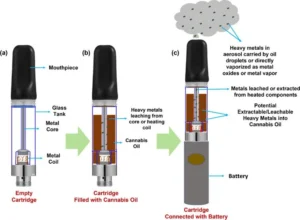Pipe and Sewer Cleaning Methods
Pipe plugs can be an unpleasant nuisance that requires costly repairs and can leave unpleasant odors behind. Regular professional pipe cleaning services can prevent this problem and extend the lifespan of sewage systems.
Sewers collect wastewater from homes and businesses using lateral lines connected to them, with blockages being caused by leaves, grease, hair, soap residue, or sand accumulations.
Hydro-Jetter
Hydro jetting is an environmentally conscious drain cleaning method that utilizes water pressure to break up clogs and debris build-up in pipes, providing an effective yet sustainable way of unclogging stubborn blockages in residential, commercial, and industrial facilities. Furthermore, this process helps clean the interior walls of pipes to remove scale, grease, food particles, and roots – particularly useful in older buildings with decades-old buildup along their sewer pipe walls.
This process involves inserting a hose into a drain or sewer line and using high-pressure bursts of water from its endpoint to flush away obstructions or any areas with compromised pipe walls. After targeting an issue with its special nozzle, high-pressure bursts are fired through at an incredible rate of speed, breaking through any blockages that are blocking your pipes while flushing away what’s blocking them from further use.
Hydro jetting is an efficient, chemical-free alternative that’s safe for most pipe materials, making it the ideal solution for hotels, restaurants, and hospitals that must keep their toilets and drains running smoothly – as well as residential clients who regularly experience clogs or are damaged by tree roots.
Pigs
Pigging is an alternative method of pipeline cleaning where bullet-shaped objects are passed through municipal water lines to remove build-up, also known as “pigging.” City crews commonly use it on force mains where water is pumped instead of flowing naturally through gravity; North Liberty used this technique on Thursday when cleaning 1.5 miles of sewer lines using this approach; other common methods for cleaning these pipes include jetting equipment or video robots.
A pig is constructed using open-cell polyurethane foam of various densities, cut or poured and shaped into its desired size, and fitted with brushes or sensors according to its intended use. When launched from its launcher, the pig continues its journey using either product or air pressure; on its journey, it scrubs and scrapes the pipeline interior while inspecting for defects or irregularities in the pipework.
As soon as a pig reaches its recipient, its condition will be evaluated. If it’s an inspection pig, its data transmissions to its receiver could include its location, temperature, and pressure measurements as well as potential crack detection sensors on board that might detect cracks or other problems that need further pigging runs or inspections to solve. With regular pipe cleaning can come decreased constipation rates as well as lower repair bills in the future; not to mention preservation of property value!
Bucket Machine
A bucket machine is an efficient solution for clearing large-diameter sewer pipes of blockages. It works by dragging a heavy-duty bucket through the pipe, breaking up and lifting gravel, roots, grit and sand from its walls before depositing them onto a truck loader unit for automatic loading onto a dump truck for disposal at disposal sites or wastewater treatment plants. When selecting your bucket it’s essential that it features durable teeth with cutting edges for efficient digging as well as configuration/spacing to retain material retention/material retention while all structural components must be sufficiently lubricated to avoid excessive wear-and-tear.
A bucket washer is a piece of sanitation equipment used for efficiently washing and sanitizing buckets, lids, utensils, and other containers to meet food-grade standards. This tool can save both labor costs and time in restaurants and businesses that utilize it; plus it’s perfect for food processing facilities looking to reduce germ levels in their products.
The bucket sewer machine system comprises two trailer-mounted winch units–a pulling unit and a truck loader unit. Steel cable is used to pull the heavy-duty bucket through pipes before being loaded onto a dump truck for disposal or wastewater treatment plants. Youngstown Wastewater Department employs four power bucket machines along with combo cleaners and jetters to meet its pipe cleaning needs.
Trenchless Inspection
Trenchless inspection is an economical approach to restoring sewer pipes that employ existing pipes as hosts rather than demolishing and rebuilding them. This approach eliminates the need for extensive excavation on your property and can save thousands in restoration costs. To get started, run a plumbing camera through your sewer line to identify issues and assess its condition; use this information to select an appropriate trenchless repair method from among several options available to you.
Once cleaned, your sewer line is hydro and mechanically cleaned to eliminate any obstructions that might prevent a successful repair from taking place. Next comes inserting a flexible resin-saturated liner into your damaged pipe that is then cured into place, creating an impenetrable barrier against cracks, breaks, or root intrusion.
If the liner doesn’t solve the issue, an alternative strategy would be using a splitting head to disassemble your old, damaged pipe while simultaneously feeding in a new one. The new pipe would be constructed of polyethylene material without joints to avoid future issues like leakage and clogs.
Once completed, your repaired sewer pipe will be reconnected to your home and regular service can resume. Trenchless repair is fast, straightforward, and ecologically responsible – an ideal method for revitalizing failing sewer lines.













1 comment